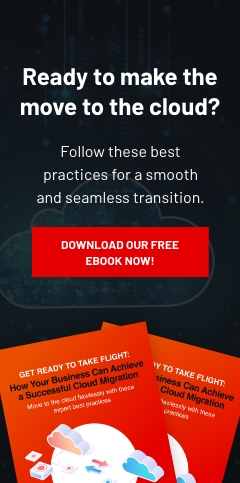By now, most computer users are at least vaguely familiar with the need to keep their software up to date. But hitting the “remind me later” button when a software update notification pops up is still a common practice. The problem with this is that it only takes one unpatched software to expose your business to a major cyberattack.
Fortunately, long gone are the days when it was necessary to manually download critical security updates from vendor websites and install them yourself. Patch management solutions can automate the process to ensure your business systems always have the latest security and performance patches installed.
Here are seven tips to help ensure patch management goes smoothly:
#1. Make a system inventory
Your patch management solution can only be effective if everything’s included. When setting it up in the first place, this is perhaps the most time-consuming step of all, since you need to think about every device and application used for business.
Beyond servers, workstations, and networking infrastructure in the office itself, you also have to think about any employee-owned devices used for work, internet-connected smart devices, and collocated resources. You’ll then have to keep track of when they were last updated so you can ensure they have the latest updates.
#2. Assign risk levels
Larger computing infrastructures are inherently more complex and take more time to update, which is why you need to prioritize carefully. For example, downloading and installing updates all at once across hundreds of devices might consume so much computing resources that it brings business to a halt.
While all connected systems should be patched, it’s important you prioritize any which handle sensitive information or are critical for everyday operations. Patches that are deemed less critical can be scheduled at a later time — preferably after office hours –- to ensure that system-wide updates don’t interrupt your employees.
#3. Consolidate your software
With business technology becoming increasingly spread across a range of local, mobile, and cloud resources, it’s easy to end up in a situation where you’re running lots of different versions of lots of different programs and operating systems. To simplify patch management and lessen the risk of exposure, you should consolidate your software. For example, stick with one version of one operating system, instead of trying to manage many installations of Windows or Linux.
#4. Keep up with announcements
Although most operating systems and other software do a pretty good job of keeping themselves up to date, it’s not something you can take for granted. For example, if you’re on a data-limited mobile connection, major updates might be prevented from installing. Once you have a clear inventory of your products, be sure to subscribe to vendor updates on social media or email so you’re always kept informed. Many patch management solutions can do this for you.
#5. Test before applying
Every operational environment is unique, but they all contain an increasing number of working parts. That means there’s a lot that can go wrong, such as incompatibilities and failed patch installations. That’s why, for example, Microsoft lets Windows 10 users defer updates for up to 30 days. While critical security updates should always be applied as soon as possible, things like performance and feature updates should be tested in a self-contained operating environment before going live on your business-critical systems.
#6. Have a backup plan
Things don’t always go according to plan, and there have been cases where updates leave computers unable to boot. This is more likely to happen with major updates, such as service packs and feature updates.
Before installing any new versions of important software, be sure to back up everything first. Ideally, this should be automated, with your data synchronized with an off-site, online storage facility. Patch management software should also let you roll back to an earlier version if necessary.
#7. Automate everything
Most technology problems stem from human error, and failing to install a critical update is one of the more common mistakes. But it’s admittedly not easy when you have to keep dozens or even hundreds of devices up to date across increasingly disparate environments.
With a patch management solution, you have complete control over the patching process, including much of the testing needed before the patches go live. This will save time, reduce the need for reinstallations, and ensure the continued protection of your endpoints from new and emerging threats.
Complete Document Solutions provides patch management services that give you access to the latest groundbreaking features and keep you safe from the newest threats. Contact us today to make sure your business is fully up to date.



Leave a comment!